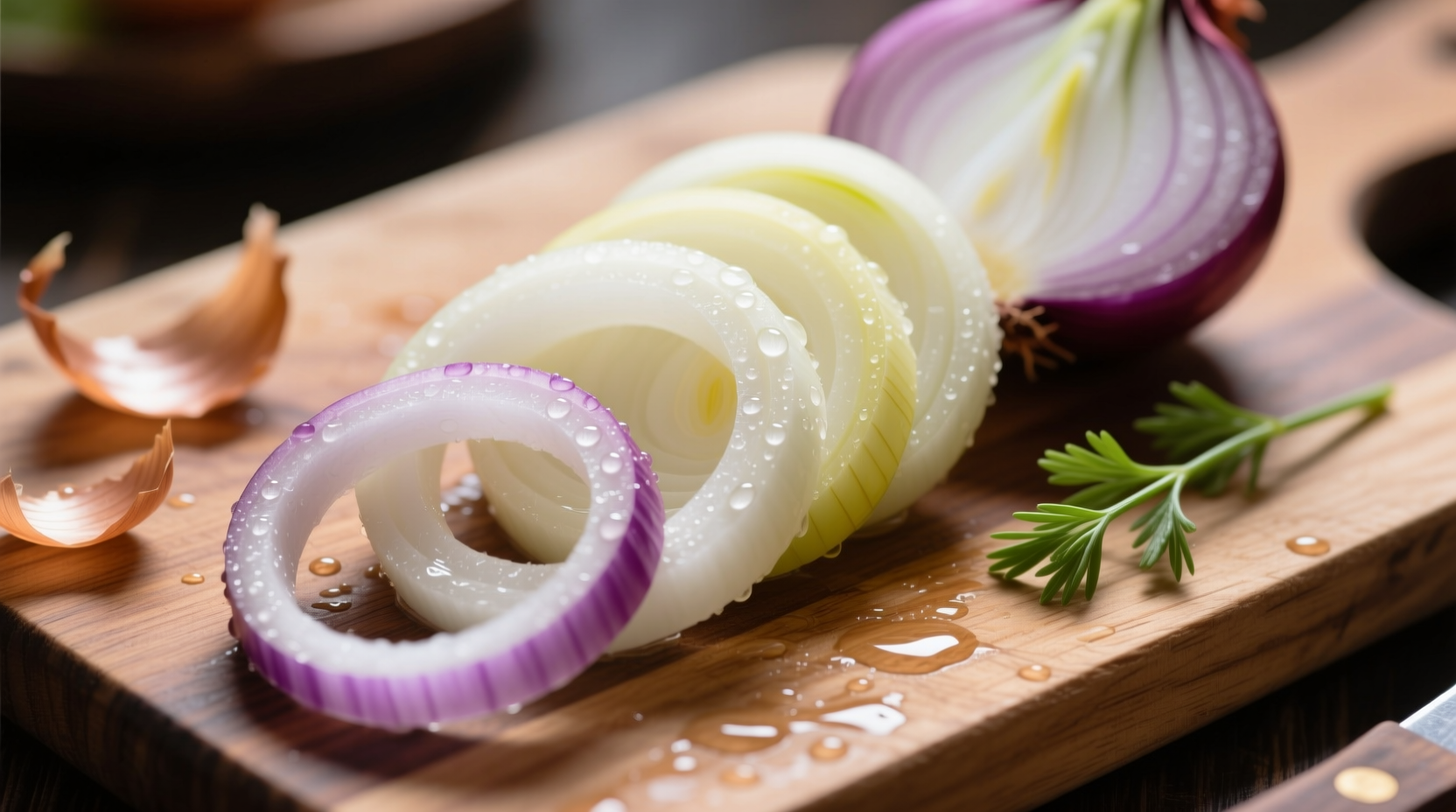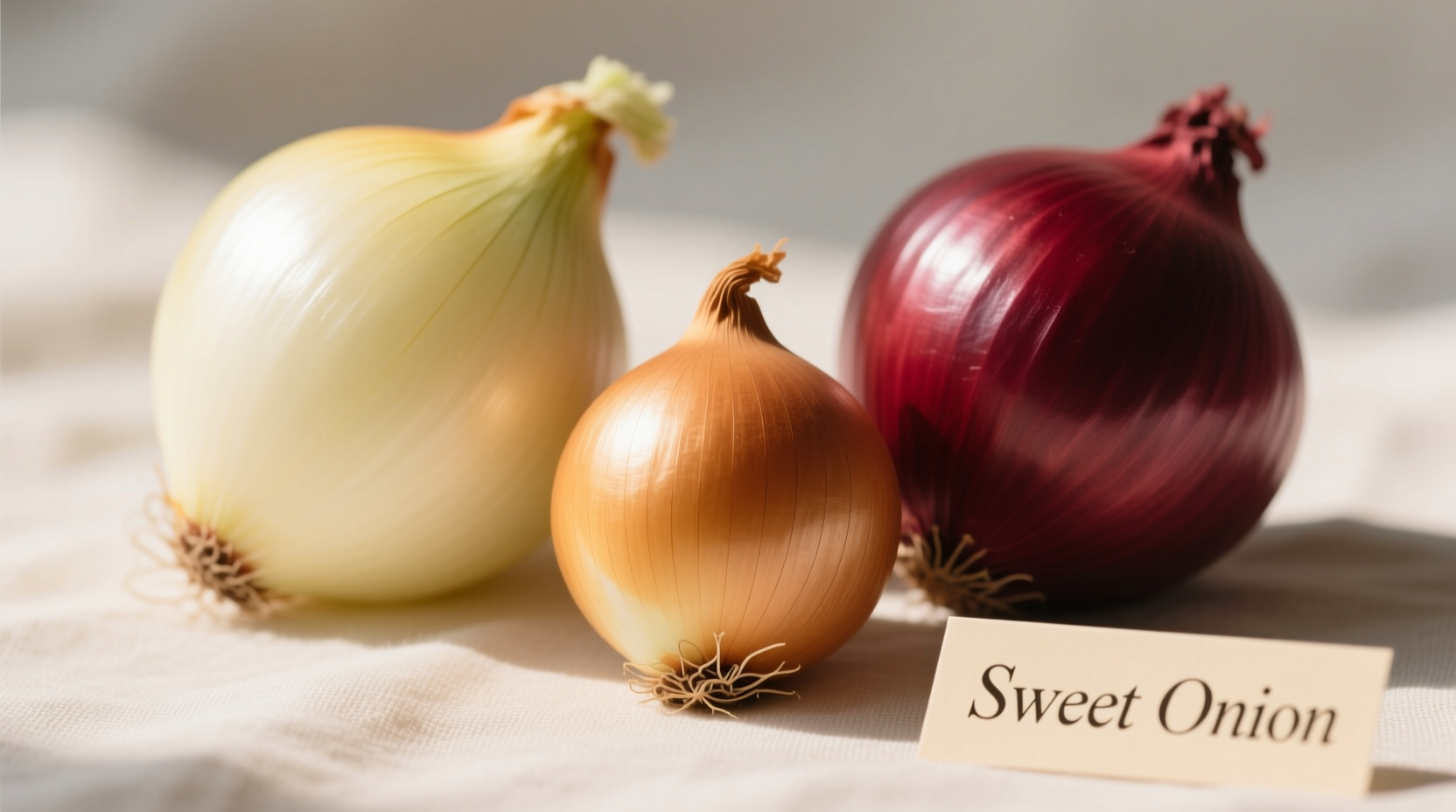If you're wondering which onion is sweet, the answer is clear: Vidalia, Walla Walla, Maui, and Texas Sweet onions are the primary sweet varieties. These onions contain lower sulfur compounds and higher sugar content than yellow or red onions, making them ideal for raw applications and dishes where a mild, sweet flavor is desired.
Ever bitten into a raw onion expecting mild flavor only to get that intense, eye-watering punch? You're not alone. Many home cooks struggle to identify which onion is sweet enough for salads, sandwiches, or fresh salsas without overwhelming other ingredients. Understanding the difference between sweet onion varieties and their standard counterparts can transform your cooking experience.
Why Onion Sweetness Matters in Cooking
The sulfur compounds in onions create that characteristic pungent flavor when cut or chewed. Sweet onions naturally contain less of these compounds and more sugar, typically between 5-7% sugar content compared to 3-5% in yellow onions. This chemical difference explains why which onion is sweet becomes such an important question for specific recipes.
Professional chefs consistently reach for sweet onions when preparing dishes that won't undergo long cooking times. The delicate flavor disappears when cooked too long, making selection critical for raw applications. As Antonio Rodriguez explains, "Sweet onions shine when you want onion flavor without the burn - they're the difference between a balanced salad and one that overpowers every other ingredient."
| Onion Variety | Sugar Content | Sulfur Compounds | Best Used For |
|---|---|---|---|
| Vidalia | 6-7% | Lowest | Raw applications, sandwiches, salads |
| Walla Walla | 5-6% | Very Low | Salsas, garnishes, quick sautés |
| Maui | 5.5-6.5% | Very Low | Tropical dishes, ceviche, relishes |
| Yellow Onion | 3-5% | High | Long-cooked dishes, soups, stews |
The Science Behind Sweet Onions
Sweetness in onions isn't just marketing hype—it's science. The University of Georgia's agricultural research confirms that sweet onion varieties grown in low-sulfur soil (like the sandy fields of Vidalia, Georgia) develop significantly lower levels of pyruvic acid, the compound responsible for pungency. This geographical advantage creates the distinctive mild flavor profile that defines true sweet onions.
It's important to note that not all onions labeled "sweet" are created equal. The Vidalia onion, protected by a Federal Marketing Order since 1989, can only be grown in 20 specific Georgia counties. This geographical indication ensures consistent quality and flavor profile that generic "sweet" onions can't guarantee.
When to Choose Sweet Onions (and When Not To)
Understanding which onion is sweet matters most when considering your cooking method:
- Raw applications: Sweet onions excel in salads, sandwiches, and fresh salsas where their mild flavor won't overpower other ingredients
- Quick cooking: Use for 5-10 minute sautés where you want to maintain some texture and sweetness
- Avoid for long cooking: Their delicate flavor disappears after 20+ minutes of cooking—opt for yellow onions instead
- Substitutions: When sweet onions aren't available, soak regular onions in cold water for 15 minutes to reduce pungency
"Many home cooks make the mistake of using sweet onions for everything," notes Rodriguez. "They're fantastic for raw applications, but for French onion soup or long-simmered sauces, you actually want the stronger flavor profile of yellow onions to develop those complex caramelized notes."
Selecting and Storing Sweet Onions Properly
When shopping for sweet onions, look for firm bulbs with dry, papery skins and no soft spots. Unlike their pungent counterparts, sweet onions have a shorter shelf life due to higher water content. Store them in a cool, dark place with good air circulation for up to 2 weeks—never in plastic bags which trap moisture and accelerate spoilage.
For extended storage, slice and freeze sweet onions for cooked applications (though this diminishes their raw appeal). Never refrigerate whole sweet onions, as the cold temperature converts their sugars to starch, diminishing that characteristic sweetness you're looking for when you search which onion is sweet.

Common Misconceptions About Sweet Onions
Several myths persist about sweet onions that can lead to cooking disappointments:
- "All white onions are sweet": White onions typically have a sharper flavor than yellow onions despite their color
- "Sweet onions don't make you cry": They still contain enzymes that cause tearing, though generally less intensely
- "Sweet onions are genetically modified": They're naturally occurring varieties grown in specific soil conditions
- "Any onion labeled 'sweet' is the same": Only regionally protected varieties like Vidalia guarantee consistent sweetness
Practical Applications in Your Kitchen
Now that you know which onion is sweet, put this knowledge to work:
- Create restaurant-quality onion rings using Vidalias for that perfect sweet-crisp texture
- Add thin slices to caprese salads for subtle flavor without overwhelming the tomatoes
- Make quick pickled onions with minimal sugar since the base onion is already sweet
- Substitute for shallots in vinaigrettes when shallots are unavailable
- Use in fruit salsas where strong onion flavor would clash with delicate fruits
Remember that sweet onions vary by season—peak availability runs from April through August, though storage techniques extend their market presence. During off-season months, look for "sweet" labeled onions from different growing regions to maintain consistent flavor in your dishes.











 浙公网安备
33010002000092号
浙公网安备
33010002000092号 浙B2-20120091-4
浙B2-20120091-4